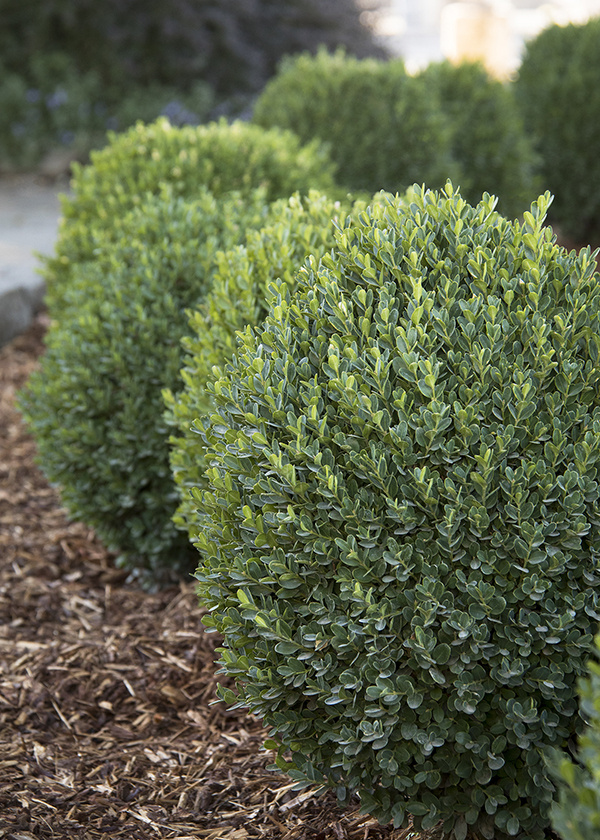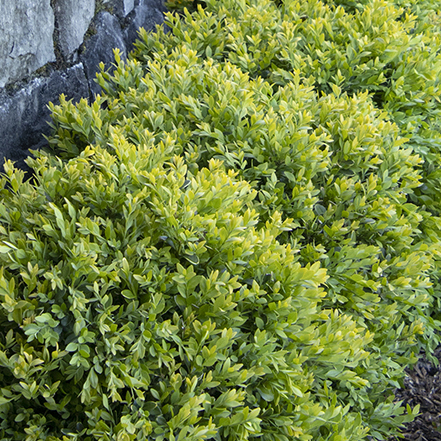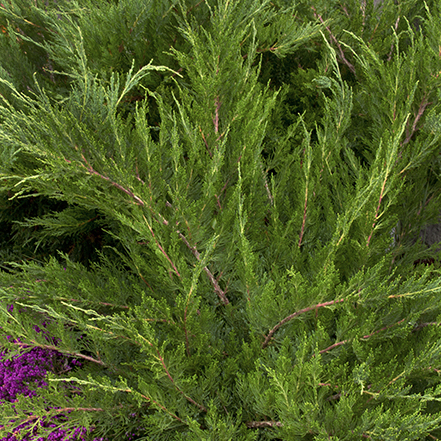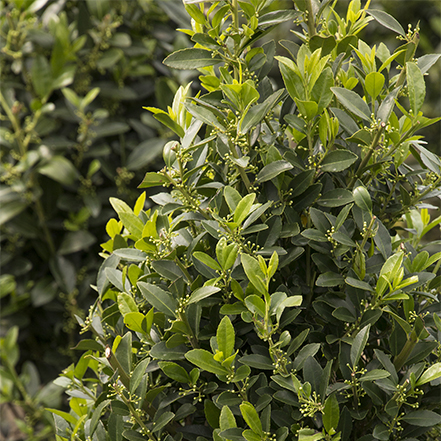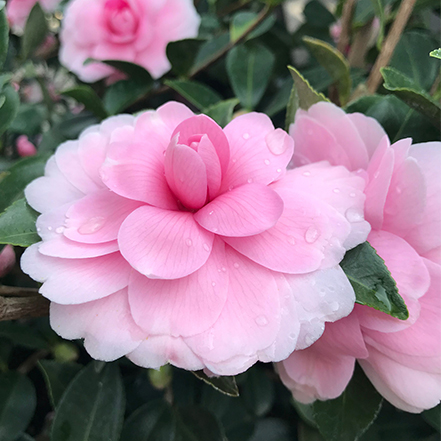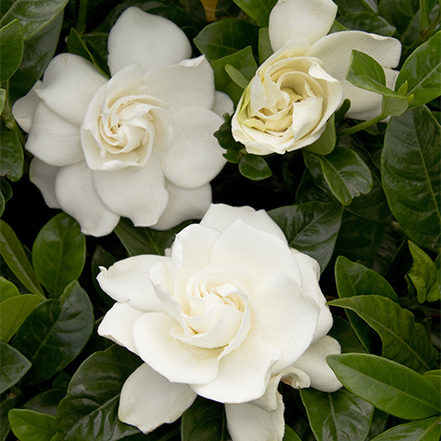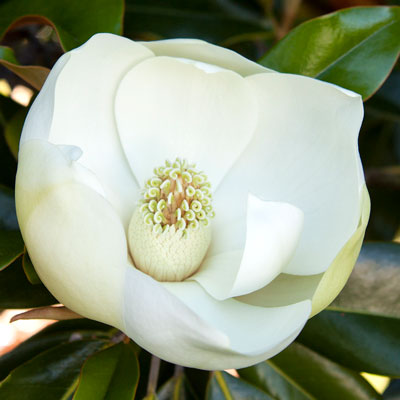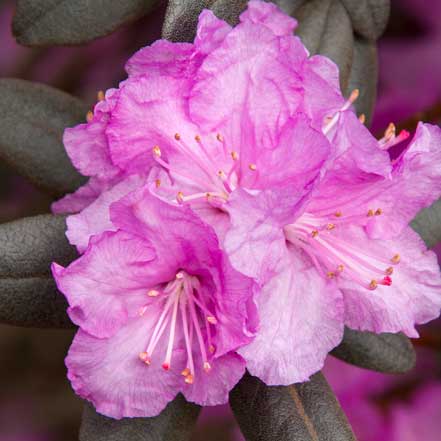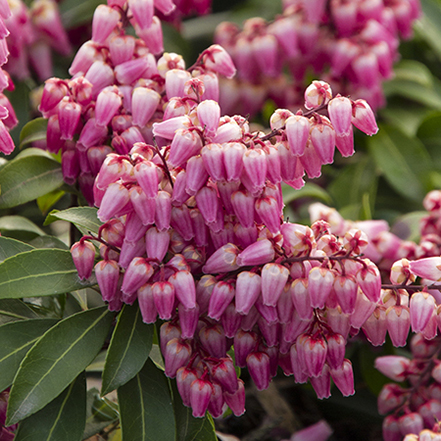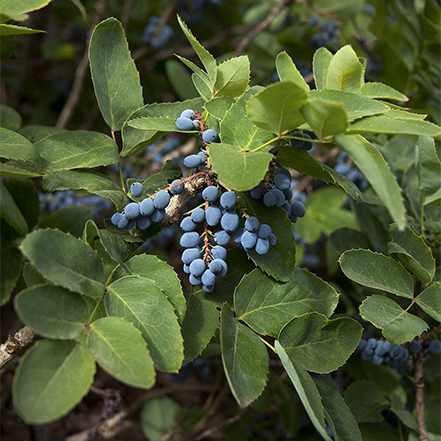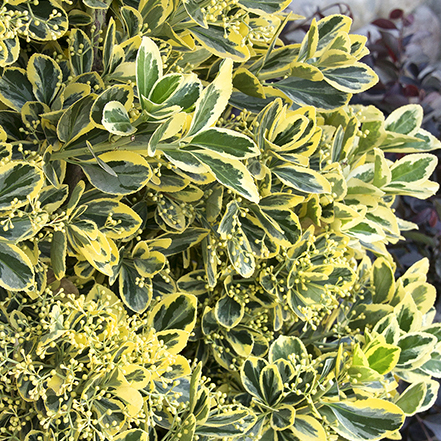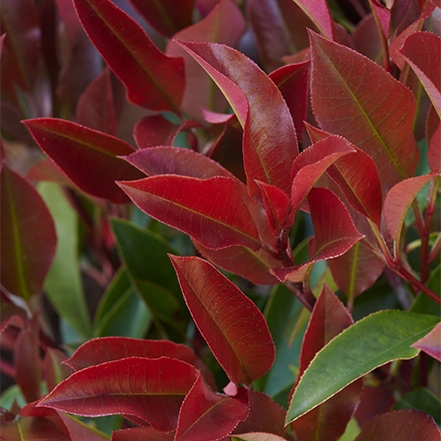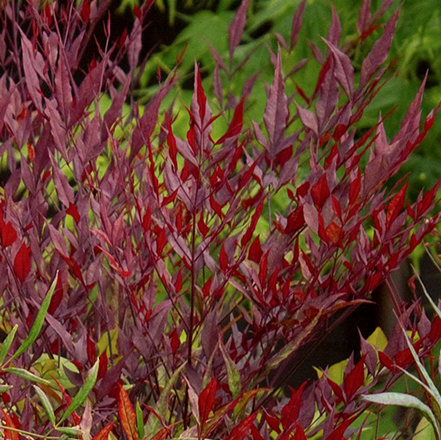Evergreen shrubs provide green and beauty throughout the year and are an excellent option for climates that need a versatile plant. Whether you need shrubs for privacy, shape, or to complement another part of your landscape, there are plenty of options to choose from.
(Above) This line of compact, evergreen Petite Pillar™ Dwarf Boxwoods will look great all year long.
All of the choices can get overwhelming, so we're here to help. We'll walk you through top evergreen shrub choices, as well as offer tips on how to choose the right one for your climate and landscape needs.
Discover the Best Evergreen Shrubs for Your Garden
Let’s dive into some popular, versatile evergreen shrubs for all types of gardens and climates.
Favorite Evergreen Shrubs for Nearly Any Garden
Boxwood: Boxwoods are adaptable and easy to grow. These plants are known for their dense foliage that can be shaped into hedges or topiary designs. Moreover, boxwoods are shade-tolerant and grow well in various soil types.
Juniper: Junipers are highly adaptable and do well in many climates. These shrubs are great for entryways or formal gardens. You can also use junipers to create privacy screens, hedges, or focal points in your yard.
Holly: While holly may make you think of Christmas, these shrubs can shine in your garden all year. Holly shrubs are useful, easy to care for, and have a wide range of sizes for you to choose from. You can use holly as a foundation shrub to complement other plants or add a towering holly plant as a statement to your landscape.
Chicagoland Green®
Boxwood
Selected by the Chicago Botanic Garden for superior cold hardiness, this boxwood showcases lustrous green foliage all year long. With its English boxwood-like appearance and uniform oval shape, it serves as an exceptional low hedge. It also works wonders as a foundation plant or backdrop for perennials, providing evergreen charm. Partial to full sun. Up to 4' tall and wide. Zones 4-9.
Mint Julep®
Juniper
Distinguished by its striking mint green foliage gracefully adorning its arching form, this shrub captivates attention. Thriving in diverse climates, it excels in shrub borders, mass plantings, and natural areas. It also shines as a splendid topiary feature, enhancing entryways and formal gardens alike. Full sun. Up to 6' tall, 8' wide. Zones 3-9.
Emerald Colonnade®
Holly
This male evergreen holly boasts an attractive pyramidal shape, ideal for creating stunning hedges, screens, or windbreaks. Its dense and glossy bright green foliage can withstand shearing, rendering it perfect for topiary purposes or as a formal accent near entryways or gardens. Full sun. Up to 12' tall, 8' wide. Zones 7-9.
Broadleaf Evergreen Shrubs That Thrive in the South
If you’re looking for a broadleaf shrub for a southeastern United States climate, there are a number of shrubs that will thrive in your garden.
Camellias: Camellias are a popular choice for gardens in the Southeast because they can be grown in various conditions and thrive in mild winters and acidic soils. This plant is known for its stunning wintertime blooms and glossy green leaves. Because camellias appreciate dappled shade and well-draining soil, they are perfect for planting beneath tall trees.
Gardenia: Gardenias are prized for their sweet-smelling fragrance and white blooming flowers. These shrubs are perfect for entryways or patios, and they keep their glossy evergreen foliage year round so you can enjoy this rich color.
Southern Magnolia: Southern magnolias are iconic evergreen trees that can be grown as large shrubs. They are known for their massive, creamy white flowers and large glossy leaves. These plants like well-drained, acidic soil for optimal growth.
Chansonette's Blush
Camellia
A delightful addition to the beloved camellia family, this stunning, compact variety showcases an abundance of soft pink flowers on glossy, dark green foliage. With its profuse blooms, it becomes an ideal choice for charming floral arrangements. This camellia thrives as a natural hedge, espalier, or groundcover, lending its beauty to shaded settings. Full to partial shade. Up to 3' tall, 8' wide. Zones 7-9.
First Love
Gardenia (Grafted)
The delightful fragrance of the magnificently large, double white blooms, surpasses those of any other gardenia variety and blooming earlier. With its superior grafted selection, it thrives effortlessly, thanks to nematode-resistant rootstock, the ability to withstand poor soils, and enhanced nutrient absorption. Partial to full sun. Up to 8' tall, 6' wide. Zones 8-11.
Little Gem Dwarf
Southern Magnolia
Introducing a compact and enchanting dwarf southern magnolia, featuring smaller dark green foliage and a slender, well-proportioned structure. Its sizeable glossy evergreen leaves reveal rustic-brown undersides, adding to its allure. The plant showcases exquisite, sizable, fragrant white blooms. Perfect for small gardens, it thrives as a naturally petite tree or a generous shrub. Full sun. Up to 25' tall, 15' wide. Zones 7-9.
Understanding USDA Hardiness Zones for Growing Evergreen Shrubs
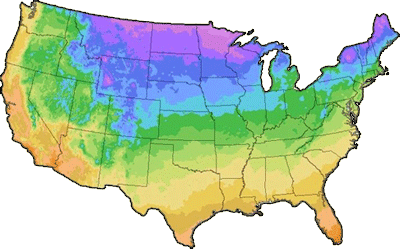
To grow evergreen shrubs, it’s important to understand USDA Hardiness Zones. These zones are a system used to classify a region's average annual minimum temperature. With this information, you can choose shrubs (and other plants) that are likely to survive in your area.
Evergreen shrubs can be grown in a variety of USDA Hardiness Zones, and the specific zones depend on the plant. For example, boxwoods can be grown in USDA Hardiness Zones 5-9, while holly can be grown in USDA Hardiness Zones 5-10.
What Are USDA Hardiness Zones and Why Do They Matter for Growing Evergreen Shrubs?
As mentioned, USDA Hardiness Zones are a valuable tool for gardeners to help them determine which plants will thrive in a specific geographic area. The United States Department of Agriculture has divided the country into 13 zones based on average annual minimum winter temperatures. Each zone represents a 10-degree Fahrenheit temperature difference, allowing gardeners to better understand the plants that can survive in their region.
It is essential to select evergreen shrubs suitable for your USDA Hardiness Zone, as this will ensure that they can survive year-round in your garden. When purchasing plants, you might notice a Hardiness Zone range listed on the label, making it easy to determine if the plant is a suitable candidate for your garden. You can view the USDA Plant Hardiness Zone map here.
Growing Evergreen Shrubs in Different USDA Hardiness Zones
Evergreen shrubs can thrive across a broad range of Hardiness Zones, which ensures there is a suitable plant for every garden. For instance, junipers can grow in Zones 3-9, while azaleas are hardy in Zones 4-9. When selecting evergreen shrubs for your garden, choose those that fall within your specific USDA Hardiness Zone to boost their chances of thriving.
Beyond Hardiness Zones, it is crucial to consider factors like soil type, water availability, and light exposure when selecting evergreen shrubs for your garden. By considering these factors and choosing shrubs that suit your specific Hardiness Zone, you can create a lush, year-round landscape with plants that will stand the test of time.
How to Prune and Maintain Evergreen Shrubs for a Beautiful Landscape
To keep your shrubs healthy and encourage new growth, it’s important to prune and maintain them. While not all shrubs need pruning, it’s a common part of their care. Pruning is vital for many reasons, including:
- To improve the health of the shrub. Pruning can help to remove dead, diseased, or damaged branches. This can help to prevent the spread of disease and pests, and it can also help the shrub to grow more vigorously.
- To improve the appearance of the shrub. Pruning can help to shape the shrub and remove any unsightly branches. This can make the shrub more attractive and can also make it easier to maintain.
- To increase the lifespan of the shrub. Pruning can help to remove old, dying branches. This can help the shrub live longer and produce more flowers and fruit.
- To control the size of the shrub. Pruning can help to keep the shrub from getting too large. This can be important if you have limited space or want to keep the shrub from blocking your view.
To encourage new growth. Pruning can help promote new growth. This can be helpful if you want to revitalize an old shrub or if you want to encourage the shrub to produce more flowers or fruit.
Tips for Pruning Evergreen Shrubs to Promote Healthy Growth
- Prune during the dormant season: Pruning is best done in late winter or early spring while the plants are still dormant. This helps to minimize stress on the plant and allows for potential new growth to emerge in the spring.
- Use sharp and clean tools: Make sure your pruning tools are sharp and clean to prevent the spread of diseases and ensure clean cuts that promote faster healing.
- Identify dead, damaged, or diseased branches: When pruning, focus on removing branches that are dead, damaged, or exhibiting signs of disease. This helps maintain the overall health of the shrub by preventing the spread of infection.
- Make proper cuts: When pruning a branch, cut at a slight angle directly above a bud, near a lateral branch, or at the branch collar (where the branch meets the trunk). This helps promote proper healing and encourages new growth.
Prune for shape: Prune evergreen shrubs to maintain their natural shape. Avoid shearing or excessively trimming, which can cause stress and inhibit growth.
Evergreen Flowering Shrubs for Year-Round Color in Your Garden
Rhododendron: Rhododendrons are beloved for their stunning spring blooms and dark-green, leathery leaves that remain evergreen. With numerous species and cultivars available, there is a rhododendron to suit almost every garden space.
Pieris japonica: With clusters of bell-shaped flowers and vibrant foliage, Pieris japonica adds both color and texture to your landscape. The flowers bloom in early spring, while the new foliage growth emerges in shades of bronze and red, adding further interest.
Leatherleaf Mahonia: Mahonia is an upright, evergreen shrub with distinct foliage and terminal clusters of fragrant yellow flowers that are followed by powder-blue grape-like fruit clusters. To increase your flower and fruit yield, plant groupings of leatherleaf mahonia.
P.J.M.
Rhododendron
A resilient and captivating rhododendron, featuring petite clusters of vibrant lavender-purple blooms that beautifully juxtapose the small, dark-green leaves. Its evergreen foliage transforms into a rich mahogany-brown hue during winter. Notably, this variety exhibits exceptional endurance in both heat and cold conditions. Partial sun. Up to 5' tall and wide. Zones 4-8.
Enchanted Forest®
Impish Elf™ Pieris
Introducing a captivating late-blooming evergreen, this compact beauty showcases dark purple-pink buds, adding a touch of splendid winter color. As the season transitions, it bursts into a vibrant display of bright pink, bell-shaped flowers. The glossy new foliage emerges in a striking brick-red shade on deep-red stems. An exceptional choice as a foundation plant, it also thrives wonderfully in mass plantings. Partial sun. Up to 5' tall and wide. Zones 6-8.
Creeping
Oregon Grape
A captivating North American native shrub, this low, sprawling plant showcases leathery, spiny green foliage and delightful sprays of bright-yellow spring flowers. As summer arrives, it offers clusters of blue-black fruit, adding further allure. With its versatility, it serves as an excellent choice for large-scale groundcover in woodland gardens or as a captivating addition to small shrub groupings. Partial shade to partial sun. Up to 2' tall, 4' wide. Zones 5-9.
Strong Architectural Form or Unique Color: Choosing Evergreen Shrubs for Bold Statements
If you want your yard or garden to have a focal point shrub with strong architectural interest, or unique color, here are some ideas to get started:
Wintercreeper (Euonymus): Many wintercreepers have unique variegation that can brighten a garden all year long. Moonshadow wintercreepers, for instance, produce lustrous green leaves with bright yellow centers, and Chollipo features creamy leaf variegation. You can use it as a low hedge plant or groundcover or to create colorful edging along a walkway.
Red Dynamo Photinia: This evergreen plant is perfect as a hedge or privacy screen and adds fantastic color to any landscape. Its lustrous, burgundy-red foliage sits well on an upright form, and it rarely needs pruning. Plus, photinia has a high heat tolerance and is known to be pest and disease resistant.
Heavenly Bamboo (Nandina): Nandina is a great choice for dynamic color. Choices like Plum Passion®, Gulf Stream, and Sienna Sunrise® are all great choices for an evergreen option that offers dramatic color changes throughout the year.
Holly (Ilex): Upright holly varieties like Pencil Japanese Holly, as well as varieties like Emerald Colonnade® with a naturally pyramidal form are perfect for providing strong architectural structure in the garden. Boxwoods are also a great choice!
Chollipo
Euonymus
A striking and compact evergreen shrub adorned with creamy leaf variegation, perfect for enhancing foundations, hedges, screens, landscape accents, or large containers. Its tightly-branched growth habit lends itself well to shaping into formal topiary creations. Notably resilient, it tolerates challenging conditions such as poor soils, heat, and salt spray. Partial to full sun. Up to 12' tall, 6' wide. Zones 6-9.
Red Dynamo
Photinia
Ideal for a quick hedge or creating a privacy screen, this attractive shrub boasts excellent resistance to pests and diseases. It adds a vibrant splash of color to low-maintenance landscapes, featuring glossy burgundy-red new foliage on a dense, upright structure that requires minimal pruning. With its remarkable heat tolerance, it thrives effortlessly in southern gardens. Full sun. Up to 10' tall, 7' wide. Zones 7-11.
Plum Passion®
Heavenly Bamboo
An evergreen that's renowned for its stunning foliage. During spring and summer, the new growth emerges in a captivating deep purple-red hue, which subtly intensifies to a redder shade in winter. This versatile and resilient shrub excels as a striking specimen plant, effortlessly enhances borders, or creates breathtaking color when massed. Partial to full sun. Up to 5' tall, 3' wide. Zones 6-11.
Frequently Asked Questions
What plant stays green all year long?
There are many plants that stay green all year round. Evergreen hollies are a popular shrub that will flourish in every season.
What bush keeps its leaves in the winter?
There are many bushes that keep their leaves in the winter, including boxwoods, hollies, and rhododendrons.
What makes a good privacy shrub?
Some popular privacy shrubs include boxwoods, juniper, ligustrum, and yew. Remember to search for shrubs based on the climate where you live, and consider the amount of water and sunlight your shrubs will get. Get a full list of our favorite evergreen shrubs for privacy here.
Learn More About Gardening with Shrubs
- Sign up for our Grow Beautifully newsletter to get more design inspiration, garden tips, how-tos, and first access to exclusive plants.
- How to Put Hydrangeas to Bed for Winter
- Boxwood Winter Care
- Best Evergreen Shrubs for Privacy
- The Best Dwarf Conifers Offer Big Solutions
- There's a Boxwood for Every Garden
- 5 Ways to Unlock Design Success with Shrubs
- How to Grow St. John's Wort and a Closer Look at FloralBerry®
- Growing Gold: Light up your landscape with yellow trees and shrubs





